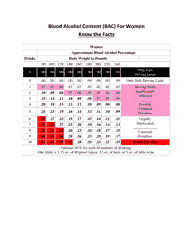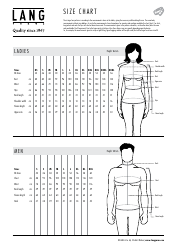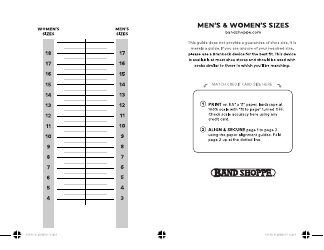Blood Alcohol Content (Bac) Chart for Men
The Blood Alcohol Content (BAC) chart for men is a resource used to estimate the amount of alcohol in the blood based on how many drinks a person has had within a certain period of time. It's important for a variety of reasons. It can help individuals understand how much alcohol they can consume before they reach the legal limit for impaired driving, which is typically 0.08% in the United States, Canada, and Australia. It also provides valuable information about the potential effects of different BAC levels on one's physical and mental functioning. However, this chart should not be used as an exact measurement since the actual BAC can vary greatly based on numerous factors including body weight, metabolism, food intake, and type of alcohol consumed.
The Blood Alcohol Content (BAC) chart for men isn't typically "filed" by a specific entity. It's a scientific standard used widely in the medical and legal communities and is often referenced in health and law enforcement literature. In the US, the National Highway Traffic Safety Administration (NHTSA), a part of the Department of Transportation (DOT), provides information on Blood Alcohol Content standards as part of their efforts to combat drunk driving. Similarly, in Australia, Canada, and India, governmental health and safety organizations provide these standards as well. Individual states, provinces, or regions may also have additional guidelines. It's always important to follow local laws and understand the potential risks and penalties of impaired driving.
FAQ
Q: What is the Blood Alcohol Content (BAC) Chart for Men?
A: BAC chart for men is a scale that measures the amount of alcohol concentration in a man's blood. It is usually measured as mass per volume. For instance, a BAC of 0.02% means 0.2g of alcohol per 1000g of an individual's blood.
Q: How is BAC measured?
A: BAC is typically measured with a breathalyzer, a device that estimates BAC from a breath sample. It could also be measured through a blood test or urine test.
Q: What BAC level is considered legally drunk for a male driver in the US?
A: In all 50 US States, the legal limit for BAC when driving is set to 0.08% for drivers over the age of 21.
Q: Can different levels of BAC affect men differently?
A: Yes, different levels of BAC can have varying effects on different individuals. Factors like weight, rate of consumption, metabolism and food intake can create differences in how alcohol is processed.
Q: What are some effects of different BAC levels in men?
A: At lower BAC levels (0.03%-0.12%), men might experience mood elevation, increased self-confidence, and a decrease in fine motor skills. At moderate levels (0.09%-0.25%), men might experience sedation, memory impairment and impaired senses. High BAC levels (0.18%-0.30%) can create serious health risks like blackout, loss of consciousness, and even death.
Q: Is the BAC chart the same for women?
A: No, BAC charts are not the same for men and women. Women generally have less water in their bodies than men do, and as a result, may attain higher BACs after consuming the same amount of alcohol. Women also tend to metabolize alcohol differently than men.





















